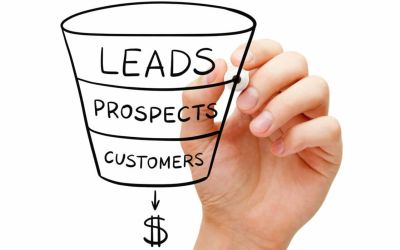Create a Better B2B Customer Experience with These Tips

With numbers like that, it’s absolutely no surprise that companies are putting customer experience before product and price. They figured out that by doing so their revenue could double in only 36 months (about 3 years).
As B2B marketers, we need to analyze the customer journey and fix or remove any issue that may give a bad experience to our customers. That’s why we decided to help you out by revealing the best tips and secrets on how you can make improvements to your own business.
The most frustrating part of the B2B customer experience (CX)
From a survey conducted by M4Comm, one of the respondents said “My biggest frustration with customer experience is that most experiences don’t focus on the customer. They’re focused on the business goals and converting “users”, not solving PEOPLE’S problems.” (Talia Wolf)”
The reason why most companies fail at delivering great CX lies in their inability to understand the client’s needs and behavior. Also, the lack of insight into their customers.
Your job is to obtain deep insight into your customers and the way they interact with you.
Even though it’s one of the frustrating challenges at this stage, it’s mandatory if you want to be successful.
Tip #1: Analyze the experience through the eyes of the client
Review the buyer journey but imagine it as if you were the client. Go through each part of the journey and be objective. Ask yourself, “Is this a great experience?”. Here are a few things you need to ask yourself as well as your customer:
- What annoyed you the most about making a purchase?
- Could the process be accomplished in fewer steps?
- Could it be done faster?
- Did it leave you with a satisfied feeling?
Tip #2: Treat B2B sales as a human being, not a faceless corporation
Investing in making your communication more personal is so powerful that we can’t stress it enough.
And this is a number one business challenge in B2B CX.
The way you understand and develop emotional relationships will hugely determine the success rate of your marketing communication and the customer experience in general.
You have enough time to make some positive perceptions that will influence the final purchase decision.
The emotional aspect plays a significant role in the decision-making journey.
Make sure that you create a strong emotional connection before the final decision is made.
Tip #3: Focus on truly solving their problem and adding value
What problem are you trying to solve for your B2B clients? Have you asked them if you are solving it?
By collecting this customer data, you are showing them that you care, and you also gain actionable insights into how to improve.
It isn’t too hard to get started, a lot of this could be done through marketing automation tools.
For example, let’s start with something simple like if they are happy with your product or service after 3 months.
You could use automation so that when a purchase is made, their contact info gets sent through Zapier or another automation tool to your work calendar.
It would schedule a reminder to give them a call 3 months from now as a follow-up.
Alternatively, you can automate it even further by automatically sending an email 3 months after the purchase with a survey that they can fill in when they want.
Why does customer experience matters for B2B?
If you provide your audience with a great CX, there is a high chance that they’ll make another purchase or maybe even become a regular customer.
Compared to the B2C audience, B2B customers aren’t that likely to leave you because of poor CX and go to the competitor right away.
However, if you don’t implement proper strategies to improve customer experience, you will lose in the long run.
On the other hand, if your B2B customer receives a sub-par experience, you can count on only a handful of them to return to you and make more purchases.
You can now clearly see why B2B CX matters and what are the consequences of not investing in it.
Once you start investing in the CX process, you’ll see improvements in both client and employee satisfaction, lower operational costs, and revenue growth by 10% to 15%.
All of this will eventually result in a higher ROI.
The business value of taking B2B customer experience seriously
When talking about business owners who’re aware of personalized customer treatment and establishing strong touchpoints with people in charge, we must mention a few important things and figures:
- People are 40% more likely to share a negative customer experience than a positive one. As you probably know already, negative rumors are getting spread blazingly fast.
- A happy client is likely to spend 140% more money than the unhappy one.
- You’re likely to keep customers with positive CX for up to 5 years longer. In most cases, unhappy customers won’t be looking to build a long-term relationship with you.
- You can reduce the costs of serving your customer base by 33% when you deliver a great customer experience.
Reinforcing positive feedback brings two main benefits, and those are better customer loyalty and strong brand integrity and value.
Let’s not forget additional customer referrals as well. When customer experience and customer success are done right your customers are more likely to recommend you to other people and companies, which has huge long-term benefits.
How can B2B companies improve customer experience?
First off, consider CX to be at the heart of everything your company is doing. It’s a huge factor for success and revenue is directly related to it.
Here are the things you should know when trying to improve the customer experience:
1. Create Omnichannel customer support
Good omnichannel customer service will help you retain 89% of your customers. Long wait times on the phone and 24-48 hour response times ruin the experience for the buyer.
B2B customer experience research is important for understanding which channels are the best.
Once you manage to understand the ways your customer interacts with your brand, you’ll be able to optimize the strategy, reduce bad emotions, and improve the conversion rate. For example:
- Give customer support by text or chat
- Send invitations for a video call
- Provide video emails that walk them through their problem
- Use social media as a new way to solve your customer’s issues
In a perfect world, customers should be able to reach out without restrictions. Transitioning between different channels is smooth and seamless. This is a tough goal to reach but should be the longer-term vision.
Some of the key benefits include:
- Better customer experience
- Fast resolution rate
- Detailed insights
- Higher customer retention
- Personalized live support
- Low churn rate
Companies that implement an omnichannel strategy for their customer service can expect an annual revenue increase of 10%.
Building a successful customer engagement strategy requires mapping customer journeys, identifying preferred channels, and learning about your customers’ needs.
2. Understanding customer needs leads to a better experience for them
Most companies divide customers according to their financial value or buying potential. When seeing it this way, it’s all about the revenue that you can make in a certain timeframe and from a certain number of customers.
And this is fine from the company’s perspective because it helps you decide where to focus your resources.
However, it’s only the first step and you can’t afford to stop here. Otherwise, you’ll fail to understand a customer’s specific needs. To improve your CX, you have to focus on segmenting your clientele by their individual needs.
Who are your customers and what value can they bring you over time?
If you don’t figure out what your customers want, you’ll miss the opportunity to deliver a great CX. As a result, there’ll be a loss in revenue.
3. Streamline the entire customer journey
Research suggests that simplicity is the best strategy. For a B2B company, simplicity translates into
- A fast website
- Easy way to purchase or repurchase
- Quick customer service response times
- A product that is easy to use and intuitive
When done right, the sales cycle is reduced, a sales rep has an easier time making a sale and the user is happy at every touchpoint.
Building a customer journey map
Customer journey mapping is the key to understanding critical touchpoints for a B2B buyer and finding ways to measure the experience for those interactions.
A customer journey map lays out each major interaction with a potential customer and makes it clear how they go from just finding out about your product to making a purchase.
But it can go beyond that to cover how they connect with customer service reps and any point after the purchase.
Plan out each major touchpoint and strategize how to make the experience seamless and easy. For example:
- Your website is easy to navigate
- You use content marketing to give valuable info that can help visitors
- Making a purchase only takes a few clicks
- An omnichannel experience to contact your team for questions, demos and support is easy and fast
Find ways to minimize the points on the journey and measuring touchpoints with the client to help you see where the experience has friction and makes the customer frustrated.
Embracing internal complexity
Coming up with the simplest form of a product is rather incredibly complex.
Your job is to figure out what your customers really want instead of what they’re saying they want. Be warned that this can actually be a super tough task to do.
Don’t fall into the trap of assuming how the customers will use your product.
Instead, do some hard work and try to identify their pain points, problems, and what they need your help with.
4. Responsiveness: Timely response, delivery, and resolution
How long does it take you to respond to customer support emails?
We’re not only talking about the email responsiveness, but also the way you handle other communication channels such as social media, phone calls, forums, and all other places where your company is present.
One survey shows that 32% of people on social media who contact brands and companies for customer support are expecting to get a response within 30 minutes.
Customer service is the most important part of the offline customer experience. However, it’s not the only one that matters.
Coming up with the best offline CX strategy requires in the first line identifying your core values, mission, and vision.
When building offline B2B CX, it’s important to create detailed profiles of the companies that you’re working with.
To set yourself as a front runner in creating a great offline CX, you should strive to learn about your client’s issues and brand culture.
That’s how you can build an emotional connection.
The quality and speed of your communication with customers determine your level of responsiveness. You don’t want your customers to wait a few days for a simple email response.
You have to value their time. The relationship that’s based on trust will influence the customer’s loyalty.
Make sure you follow up with a performance review for each interaction. This is a great way at creating a personalized experience and will help with customer satisfaction.
To verify that you are making an impact, send a follow-up message asking them to rate their experience. Using a Net Promoter Score (NPS) is a great way to keep track of progress.
lastly, keep in mind that we are going over some tried and tested methods here but it can be helpful to look into digital customer experience trends for future ways to optimize.
Example of customer experience done right
Let’s see how it works in a real example by looking at Grundfos.
It’s a huge company with over 19,000 employees who work on producing water pumps. The company has been focused on collecting and valuing customer feedback since the very beginning.
And they were doing it great by conducting annual surveys.
However, the real issue was finding out the best strategies to act on feedback.
Digital channels were overwhelmed with customer inquiries, so it was a bit difficult to handle all the problems within a reasonable timeframe.
The customer journey was subpar, and the customers were disappointed with the interactions. All of this was causing a recurring issue with the customer experience.
After implementing an automated, tailored-to-fit customer experience solution, the company was able to become more engaged and personalized with unhappy customers.
Here are the highlights of their CX strategy:
- Insight: Internal training and workshops
- Training: HR, IT, and finance departments
- App: Access for 18,000 employees to learn about the customers
- Metrics: Launched the “Customer Pulse” survey
The main challenges include:
- Covering 80 countries with their unique cultures
- Taking advantage of open comments
- Better involvement of individual employees into the customer journey
It’s also possible to overcome bad situations easily by receiving alerts and notifications about negative feedback on different CX aspects.
The number of completed follow-ups is still counting and the improvement is visible in real-time.
The investment was well worth it because the growth rate of happy customers improved dramatically across all touchpoints.


